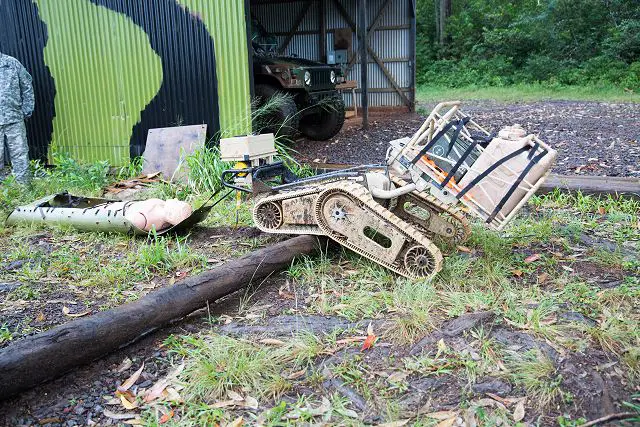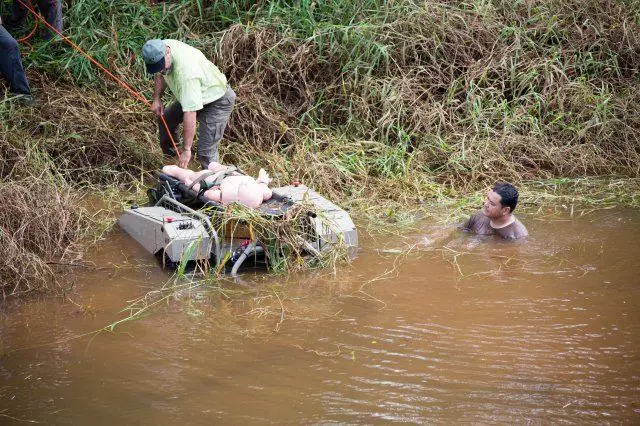|
|
|||
|
Military Defense Industry Technology - Robot for the battlefield
|
|||
|
|
|||
| US Army tests the battlefield capabilities of robot to keep soldiers out of harm's way. | |||
|
The 25th Infantry Division Soldiers and U.S. Army Research, Development and Engineering Command representatives test the battlefield capabilities of robot able to provide intelligence, surveillance and reconnaissance without putting Soldiers in harm's way.
|
|||
|
|
|||
 The 25th Infantry Division Soldiers and U.S. Army Research, Development and Engineering Command representatives test the battlefield capabilities of a robot at a East Range Training facility in Hawai. Photo Credit: US Army Staff Sgt. Tramel S Garrett (25th ID) The 25th Infantry Division Soldiers and U.S. Army Research, Development and Engineering Command representatives test the battlefield capabilities of a robot at a East Range Training facility in Hawai. Photo Credit: US Army Staff Sgt. Tramel S Garrett (25th ID) |
|||
|
|
|||
|
Technology like this can be the future of the battlefield and 25th Infantry Division Soldiers are testing this theory. Working with the Tropic Lightning Soldiers first hand is how Army research labs could extend the reach and capability of a platoon or company. "Robotics have a very important place in the future of modern warfare. We want to keep the Soldiers out of harms way, especially when it comes to mundane activities, and a machine with intelligence or operated with a man in the loop may keep them safe," Alexander said. According to a U.S. Army Research, Development and Engineering Command, or RDECOM, article, U.S. Army science and technology advisors initiated this project to field robots capable of assessing chemical, biological, radiological, nuclear, explosives, or CBRNE, threats from a safe distance. Additionally, the robots caught the eye of a group of combat medics with their ability to evacuate a casualty out of harm's way during a simulation.Freedom of maneuver is also a goal of this technology. This idea involves equipment taken out of a rucksack and mounted on a robot with the ability to move through a jungle environment. Working hand-in-hand with Soldiers and using tactics, techniques and procedures is the formula used to understand how Soldiers will use the technology in the future |
|||
|
|
|||
 |
|||
US Army tests the battlefield capabilities of robot to keep soldiers out of harm's way 10601162
- Posted On














